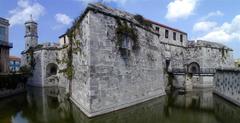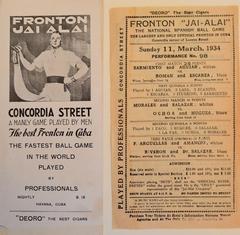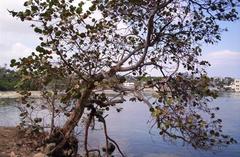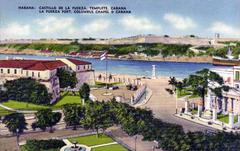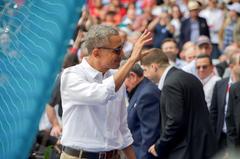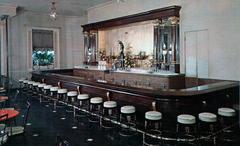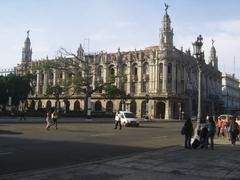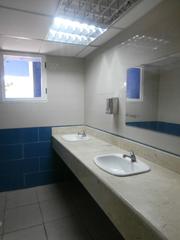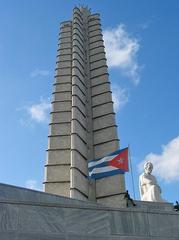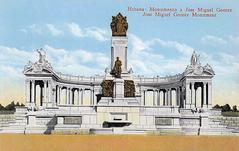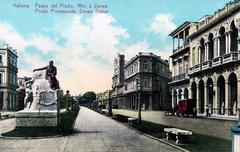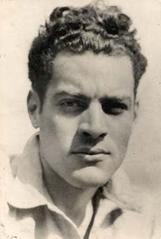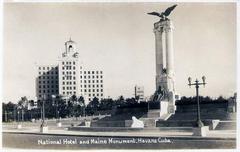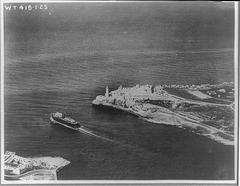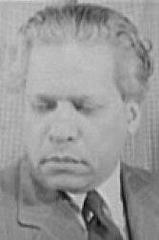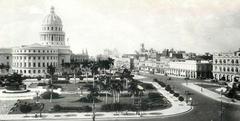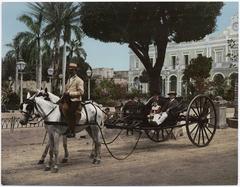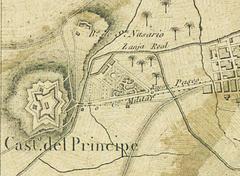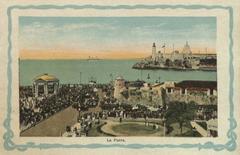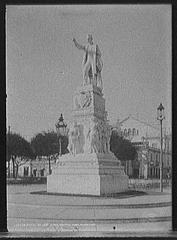
Produce Exchange Building Havana: Visiting Hours, Tickets, and Historical Significance
Date: 04/07/2025
Introduction
The Produce Exchange Building (Edificio de la Bolsa de la Habana) stands as a powerful symbol of Havana’s mercantile past, architectural ambition, and ongoing urban transformation. Nestled in Old Havana—a UNESCO World Heritage Site since 1982—this landmark bridges centuries of Cuban history, from colonial commerce to modern cultural life. Originally inaugurated in 1909 to centralize and facilitate the trade of Cuba’s agricultural exports like sugar, tobacco, and coffee, the building remains a testament to the city’s economic legacy and cosmopolitan character (Oxford Bibliographies; Cuba Travel).
This guide explores the Produce Exchange Building’s historical and economic significance, architectural style, visitor information (including hours and ticketing), travel tips, accessibility, nearby attractions, and current usage. Whether you are an architecture enthusiast, history buff, or curious traveler, this article will help enrich your exploration of Havana’s heritage (Adventure Explore Discover; Alamy).
Historical Background & Economic Significance
Constructed at the dawn of the 20th century, the Produce Exchange Building consolidated Havana’s position as a regional trading powerhouse. Its establishment formalized the trading, pricing, and arbitration of key Cuban exports, particularly sugar, which dominated the Caribbean economy for centuries. The building not only hosted daily commercial transactions but also supported financial services and dispute resolution, integrating Cuba ever more closely into global markets (EveryCulture; LAC Geographic).
The building’s economic role spurred the urban development of Old Havana, attracting merchants, bankers, and shippers, and influencing the construction of railways, mansions, and public buildings. After the 1959 Cuban Revolution, the building’s function shifted as the state nationalized private enterprises, yet its architectural shell endured as a symbol of Havana’s resilience and adaptability (New World Encyclopedia; EveryCulture).
Architectural Style and Features
The Produce Exchange Building is a prime example of early 20th-century commercial architecture in Havana, blending neoclassical symmetry with eclectic decorative flourishes. Its grand façade features columns, pilasters, and ornate cornices, while wrought-iron balconies and stonework details evoke European influences (Adventure Explore Discover; Cuba Travel).
Key Features:
- Facade: Symmetrical, with classical columns, decorative reliefs, and an arched entrance.
- Interior: Historically included a spacious trading floor, high ceilings, and wood-paneled offices for brokers and financiers.
- Construction: Steel columns rest on deep foundations, reinforced concrete floors, and locally sourced limestone—ensuring resistance to fire, earthquakes, and hurricanes (Alamy).
- Artisan Details: Floors are adorned with imported Spanish tiles, and interiors feature Cuban cedar and mahogany woodwork.
The building harmonizes with the colonial streetscapes of Old Havana, enhancing the area’s “living museum” quality (LAC Geographic).
Urban Setting and Location
Located on Plaza de San Francisco in Old Havana, the Produce Exchange Building is surrounded by cobblestone streets, restored plazas, and major landmarks such as the Basilica Menor de San Francisco de Asís, the Customs House, and the Malecón waterfront. Its central location makes it easily accessible on foot and a natural part of most Old Havana walking itineraries (archtene.com; oceanposse.com; wanderlustchloe.com).
Preservation and Adaptive Reuse
As part of Old Havana’s UNESCO designation, the Produce Exchange Building benefits from heritage conservation initiatives. Restoration efforts focus on structural repairs, preserving decorative elements, and updating infrastructure for modern use without compromising its historical character (LIMBD). Today, the building houses administrative offices and cultural spaces, contributing to the district’s vibrant urban life (LAC Geographic).
Challenges:
- Sourcing traditional materials and balancing authenticity with modernization.
- Funding restoration projects, often reliant on tourism and international support.
Visiting Information
Exterior Viewing & Interior Access
- Exterior Access: The building’s impressive facade and architectural details can be freely viewed and photographed from Plaza de San Francisco at any time.
- Interior Access: The building is not open as a museum and interior access is generally restricted due to its use as offices. Some special tours may grant limited access—check with local tourism offices or reputable tour providers for updates.
Visiting Hours & Tickets
- Hours: Exterior viewing is possible daily, 8:00 AM to 6:00 PM. There are no official interior visiting hours.
- Tickets: No ticket is required to view the exterior. Interior access, if available, may be included in a specialized tour.
- Guided Tours: Many Old Havana walking tours feature the Produce Exchange Building as a highlight, offering historical and architectural insights (The Tourist Checklist).
Accessibility
- The surrounding plaza is pedestrian-friendly, but the building’s historic structure means that interior accessibility is limited. Check in advance for special accommodations if needed.
Transportation
- Centrally located in Old Havana—reachable by foot, classic car, taxi, or local bus. Nearby landmarks include Plaza Vieja, Plaza de Armas, and the Capitolio (LAC Geographic).
Practical Travel Tips
- Best Times: Morning or late afternoon for optimal photography and cooler temperatures.
- Dress: Lightweight, breathable clothing and comfortable walking shoes for cobblestones (lonelyplanet.com).
- Safety: Havana is generally safe, but beware of petty theft and scams. Carry only the cash you need; euros are most easily exchanged (globotreks.com).
- Water: Drink bottled or filtered water only (under30experiences.com).
- Health: Bring essential medications and a basic first aid kit.
- Amenities: Public restrooms may lack supplies; carry your own tissues and sanitizer.
Nearby Attractions
- Basilica Menor de San Francisco de Asís: Renowned for classical concerts and historic architecture.
- Almacenes San José Artisans’ Market: Havana’s largest crafts market.
- Museo del Ron Havana Club: Discover Cuba’s rum-making heritage.
- Plaza Vieja & Camara Oscura: Iconic square and panoramic city viewing.
- Classic Car Tours: Start from nearby plazas for a tour in a vintage convertible (under30experiences.com).
Cultural Context & Events
The building’s location on San Francisco Square places it at the heart of Havana’s cultural life, close to music events, art exhibitions, and city festivals. Restoration projects in Old Havana are designed to benefit local residents and artisans, ensuring that heritage preservation supports community well-being (veralistcenter.org; Latina Republic).
FAQs
Q: Can I tour the interior of the Produce Exchange Building?
A: Interior access is limited; some guided tours may include special arrangements.
Q: Is there an entrance fee?
A: No fee is required for exterior viewing.
Q: What are the best times to visit?
A: Daylight hours, especially morning or late afternoon.
Q: Is the building wheelchair accessible?
A: The surrounding area is accessible, but interior access is limited.
Q: How do I get there?
A: Easily accessible by foot, taxi, or bus in Old Havana, near Plaza de San Francisco.
Q: Are guided tours available?
A: Many Old Havana walking tours include the building as a stop.
Photography & Digital Access
The building’s facade and vibrant plaza surroundings are ideal for photography. Early morning or late afternoon light enhances architectural details. Always ask before photographing people. Internet access in Havana is limited; plan for offline navigation (lonelyplanet.com).
Explore More & Plan Your Visit
For more insights, see:
Download the Audiala app for exclusive content, self-guided tours, and up-to-date travel advice. Follow us on social media for the latest on Havana’s historic sites and cultural happenings.
Summary
The Produce Exchange Building remains an enduring emblem of Havana’s economic history and architectural splendor. Its neoclassical facade, strategic location, and ongoing adaptive reuse reflect both the city’s rich heritage and its living, evolving urban identity. While interior access is limited, the building’s exterior and surrounding plaza offer a rewarding experience for visitors seeking to connect with Havana’s past and present.
Plan your visit today to experience the legacy of the Produce Exchange Building and the vibrant life of Old Havana.
References & Further Reading
- Oxford Bibliographies
- Cuba Travel
- Adventure Explore Discover
- Alamy
- EveryCulture
- LAC Geographic
- archtene.com
- oceanposse.com
- wanderlustchloe.com
- LIMBD
- The Tourist Checklist
- New World Encyclopedia
- Latina Republic
- GloboTreks
- Lonely Planet
- Under30Experiences
- veralistcenter.org









